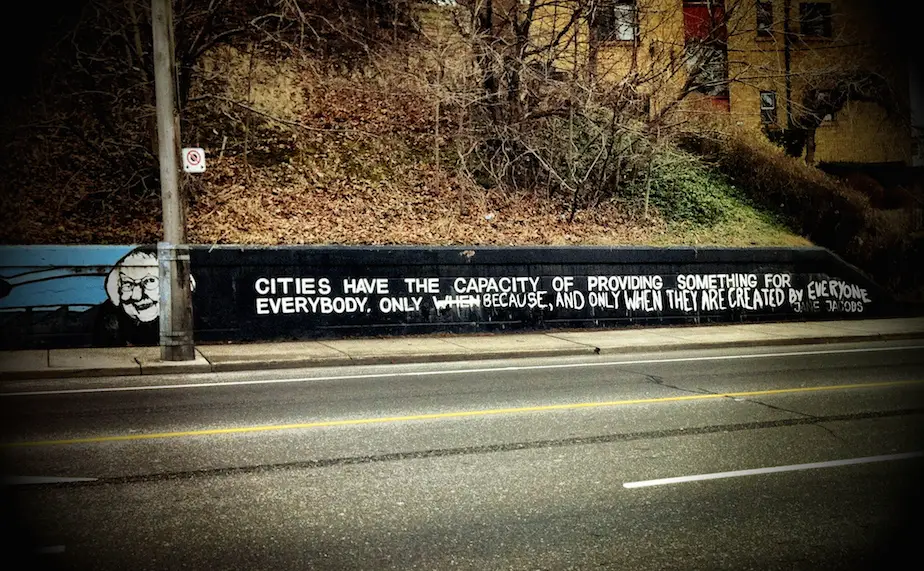From the beginning of the car age, cars have been marketed to us as tickets to freedom. In our own cars, we can choose our individual path and get to our destination quickly, unimpeded by the inconvenience/lack of speed of walking or public transportation. There is no point in denying the truth of that scenario — all things being equal, getting in a car affords tremendous mobility. In a car, not only are we not limited to destinations reachable only by foot, bike, bus or train, but cars allow us to choose our own route and set our own schedule.
The problem, however, is that all things are no longer equal. Car ownership began to become ubiquitous in the 1950s. Since then, we have revolutionized the ways in which our cities are planned and built. Caught up in the allure of the car age, we remade our places, and built new ones, that cater to cars. Today we often forget that prior to World War II, every city in America was built for easy walking and biking. In fact, the idea of living in a walkable place is nothing radical. What was radical was the program we undertook to build an entirely new type of human life. We built networks of roadways and freeways like nothing any society had ever seen before. We tore down entire neighborhoods to accommodate these roads as well as the parking lots and garages required by the cars that would travel these roads; at the same time, we ripped out the tracks for streetcars and trains.
As we became drunk on cars and the modern age, we forgot some basic things about human nature. One of our core characteristics is that we crave freedom and choices. Writing this book in 2013 and looking back several decades, it’s apparent that our society has come full circle in terms of the freedom of mobility. Where the car once provided freedom from the crowded, old city, it now is a device that enslaves us. Yes, I do mean enslaved.
Like many people my age and younger, when I was growing up, we used a car to get around everywhere; I was barely aware that there was any way to live that wasn’t entirely car reliant. For about three generations now, Americans have grown up fully immersed in the car culture, not knowing alternatives — and that’s a problem.
The problem, at its most basic, is that we have become dependent on cars. While cars were once a ticket to freedom, we are now hostages to our cars. Most of our cities and towns are such that we need a car to survive. We need a car to get food, to access decent housing, to find employment, to get to our workplaces and to entertain ourselves. If we don’t have a car, or don’t have access to one, we feel trapped, even helpless.
Most of us are all too familiar with that feeling. For me, one teenage incident in particular stands out. As a reckless sixteen year-old, I drove my old Chevy Impala to the high school parking lot one night and did donuts until the engine died. I had to get it jumped by my parents, who were so upset, they took away my keys for a week. At the time, it felt like a social death sentence. How could I possibly have a life if I didn’t have my car?
Perhaps you can remember a time in your life when you didn’t have a car. Did your car break down and you couldn’t afford to fix it right away? Or was it in the shop for a few days? Did you injure yourself in a way that prevented you from driving? Did you lose a job and just couldn’t afford a car?
It’s for all these reasons and more that I love walking and choose to live in a walkable neighborhood. Because I am not dependent on my car, I have more freedom of movement than the average American. I’m never trapped at my house or apartment because of a car problem. If my car breaks down, I can still walk, ride a bike or take public transportation very easily to everywhere I need to go. I might even decide not to fix the car for a while, since I rarely need it urgently. As someone who was raised in pretty typical suburban environments, it’s hard to describe just how empowering this freedom feels.

This post is an excerpt from the book Why I Walk: Taking a Step in the Right Direction by Kevin Klinkenberg. Images from Why I Walk.



